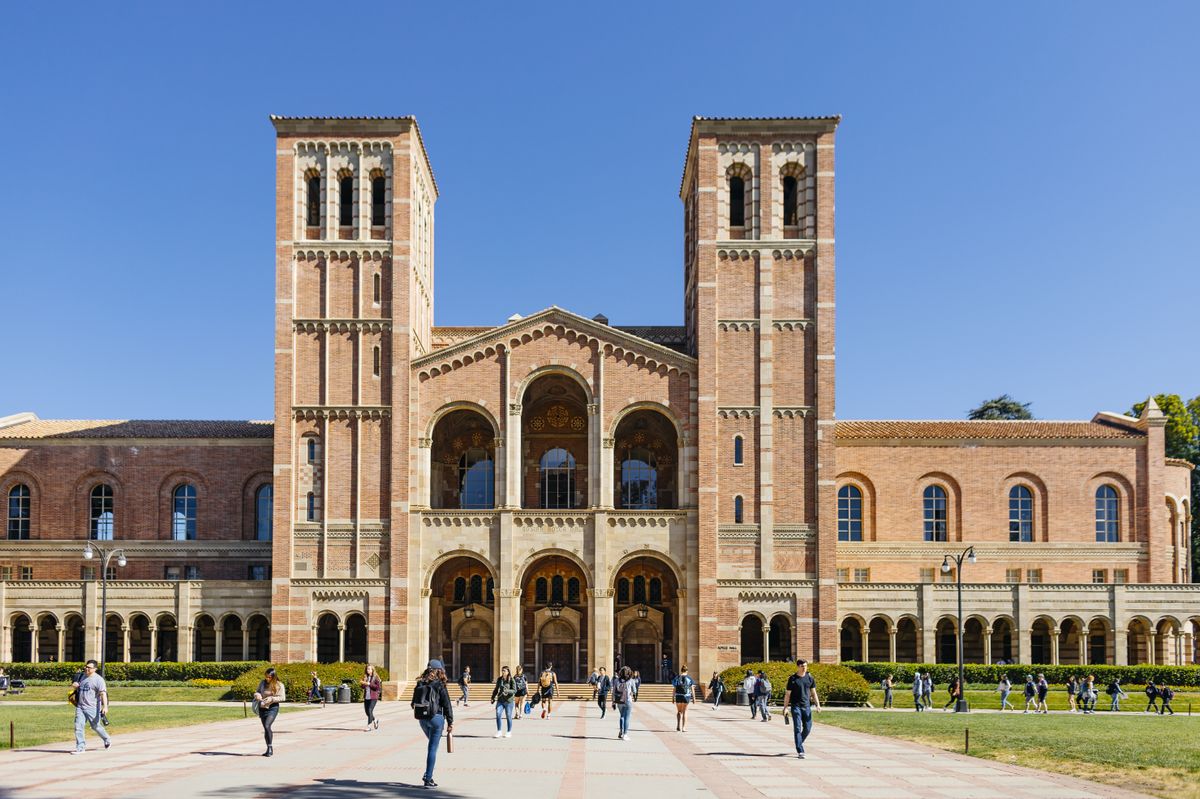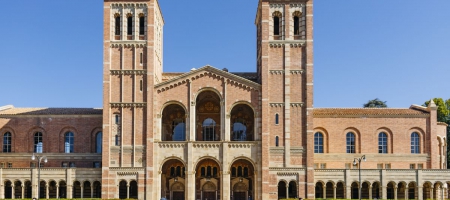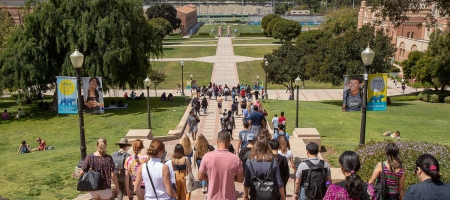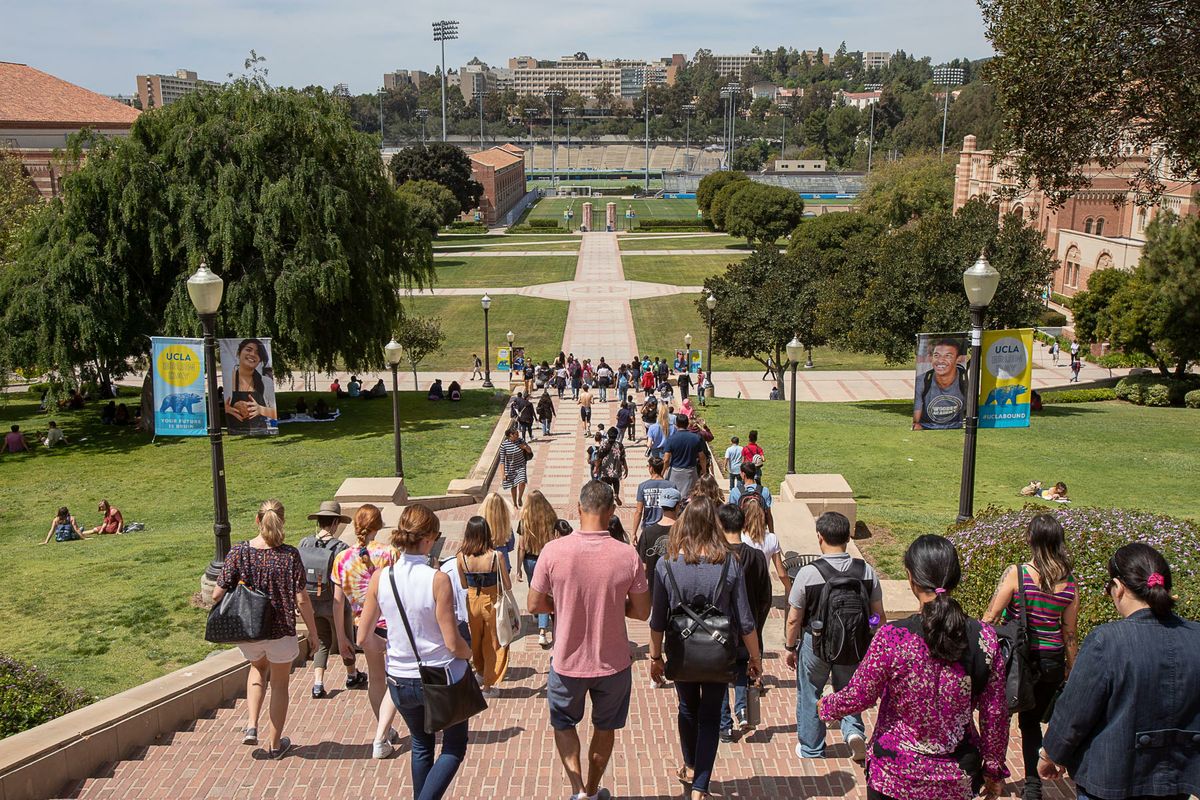UCLA named No. 1 U.S. public institution by U.S. News & World Report for third consecutive year

UCLA consistently performs well in a broad range of national and international rankings.
UCLA once again tops the list of U.S. public universities in the U.S. News & World Report “Best Colleges” rankings, which were published today. This is the third year in a row UCLA has captured this honor.
At just 100 years old, UCLA, which placed No. 20 among all private and public institutions, is the youngest of any public or private institution in the ranking’s overall Top 33.
“We are thrilled to once again be ranked the nation’s top public university, particularly as we celebrate our first 100 years,” Chancellor Gene Block said. “Even as UCLA becomes more competitive, we work hard to remain accessible to exceptional students, faculty and staff from all backgrounds who will help ensure our continued success in UCLA’s second century.”
UCLA also excelled in category-specific rankings published as part of the report. UCLA was ranked No. 1 for economic diversity among the top 25 universities, based on the number of undergraduate students receiving Pell Grants (36 percent at UCLA).
In addition, UCLA was named as the No. 1 public institution among the “best colleges for veterans,” and No. 4 among all universities. In 2018–2019, there were 572 members of the military enrolled at UCLA, the highest among the top 26 schools ranked in the category. UCLA is also among the list of colleges where students incur the least amount of debt.
Four other University of California campuses were among the top 10 public universities in the overall rankings: UC Berkeley (No. 2), UC Santa Barbara (7, tied), UC Irvine (9), and UC San Diego (10). UC Davis placed No. 11.
The top 19 institutions on the list are private universities, led by Princeton and Harvard, with Columbia, MIT and Yale tied for third.
The publication’s methodology includes factors that tend to favor private universities, such as endowment size, rate of alumni giving and student-faculty ratio. It also includes data related to academic reputation, student excellence and student retention and graduation rates, with a particular interest in students from lower income households.
In addition:
- UCLA tied for No. 7 among U.S. public universities (tied for 11 overall) for ethnic diversity.
- UCLA tied for No. 8 among public universities’ engineering schools that offer doctorates (tied for 15 overall)
UCLA consistently performs well in a broad range of national and international rankings.
Earlier this month, UCLA was named the No. 1 U.S. public institution in the Wall Street Journal/Times Higher Education College Rankings — also for the third year in a row. In addition, UCLA was recently ranked No. 2 among American public universities and No. 11 worldwide among public and private universities in the Academic Ranking of World Universities and the No. 2 U.S. public university (9 overall) in the Times Higher Education Reputation Rankings. In April, UCLA was ranked the No. 4 best-value university by Forbes.
This article originally appeared in the UCLA Newsroom.






